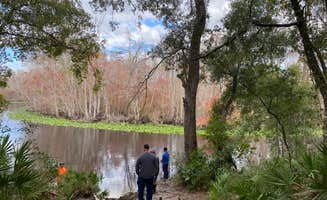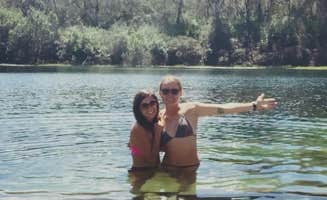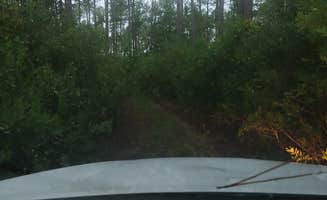Dispersed camping options near San Mateo, Florida provide primitive accommodations within the Ocala National Forest. This region features sandy soil terrain with elevations rarely exceeding 100 feet above sea level, creating unique drainage patterns around the forest's numerous natural springs and waterways. Most rustic camping areas remain accessible year-round due to Florida's subtropical climate, though summer temperatures regularly exceed 90°F with high humidity.
What to do
**Kayaking and fishing: Access points at Trout Lake Primitive Sites offer excellent water recreation opportunities. A camper noted, "It's a beautiful lake and forest. The setting is breathtaking."
Night sky observation: The St. Johns River camping areas provide exceptional stargazing due to minimal light pollution. According to a visitor at St. Johns River Dispersed Spot, "Right next to the river and the trees open up so you get a great view of the stars."
Historic site exploration: Several primitive camping areas contain remnants of Florida's early settlements and Native American history. Campers can hike to former steamboat landings and discover traces of earlier civilizations. A camper at Davenport Landing mentioned, "If you have an explorer's mindset, you'll be richly rewarded here as there is a small gravesite from the Civil War that you can find along with middens along the Ocklawaha River hiding traces of the Timucuan Indians."
What campers like
Natural swimming areas: Several locations feature spring-fed waters ideal for cooling off during hot Florida days. At Blue Sink, a visitor described it as the "Most beautiful place to stumble upon. You may need ATV or creative backpacking to get there now."
Wildlife viewing opportunities: The forest supports diverse ecosystems with abundant wildlife. One camper at Freak Creek noted, "I talked to another person that use to go out there and said she has seen a panther. I've yet to see anything."
Seclusion from crowds: Many dispersed sites offer significant privacy compared to developed campgrounds. A camper at Freak Creek Dispersed Camping mentioned, "It's super secluded and quiet. Depending when you stay there's at times people who show up to party and then leave."
What you should know
Road conditions vary significantly: Most primitive sites require vehicles with appropriate clearance. A reviewer at Trout Lake Primitive Sites warned, "Main road entry is packed dirt; smaller access road to sites is two-track about 1/4 mile through woods — very narrow tree clearance."
Limited facilities: No amenities exist at these sites. Bring all supplies including water, waste disposal bags, and food. One camper at Davenport Landing observed, "There isn't anything. Literally. No picnic tables. No fire ring. No stand-up grill. No potable (or for that matter, non-potable) water spigot."
Safety considerations: Be prepared for wildlife encounters and changing weather conditions. Some areas have safety concerns beyond natural hazards. A visitor to Lake Dorr cautioned, "Spoke to a local that warned of violence, robbery, and killings in this area of the national forest."
Tips for camping with families
Check road access before arrival: Many families find unexpected access challenges. A camper at Trout Lake stated, "So I was desperate trying to find my very first primitive camp site and started to panic and then came across the review 'you might get pinstripes', well let me tell you the trail to the lake is so narrow."
Pack extra water and sun protection: Florida's heat requires adequate hydration and sun protection, especially for children. With no potable water available, families should bring 1-2 gallons per person per day.
Consider seasonal timing: Winter months (November-February) offer more comfortable temperatures (65-75°F) and fewer insects for family camping. Spring can bring pleasant conditions but increased traffic at popular sites. One visitor to Davenport Landing reported in winter, "Pulled in around 9:30 pm. Big open spot."
Tips from RVers
Vehicle selection matters: Most rustic camping near San Mateo requires appropriate vehicles. A camper at Freak Creek advised, "The main road in has huge deep ruts, the other road has a water crossing that was over my bumper on my lifted Mojave... If you don't have 4wd and recovery gear I wouldn't risk it."
Site selection cautions: RV campers should scout potential sites before committing to avoid getting stuck. At Trout Lake, an RVer noted, "Just barely scraped a FWD Promaster through the trees, into a pullout just before sand started."
Prepare for self-sufficiency: With no hookups or facilities, RVers must bring everything needed for the duration of stay. Storage capacity for fresh water, waste containment, and power generation are essential considerations for any length of stay.




